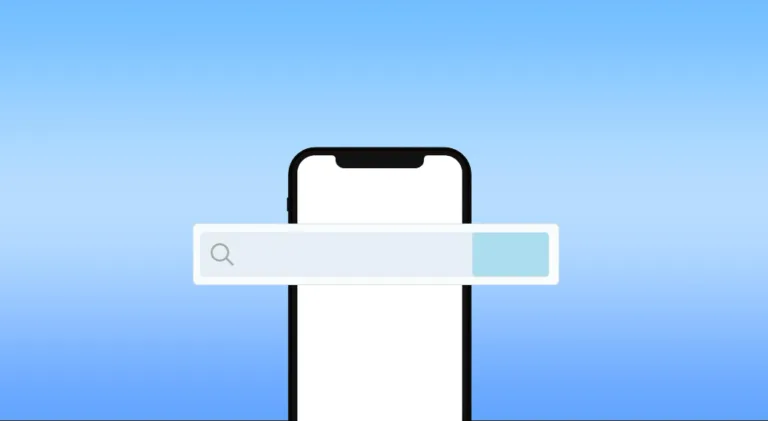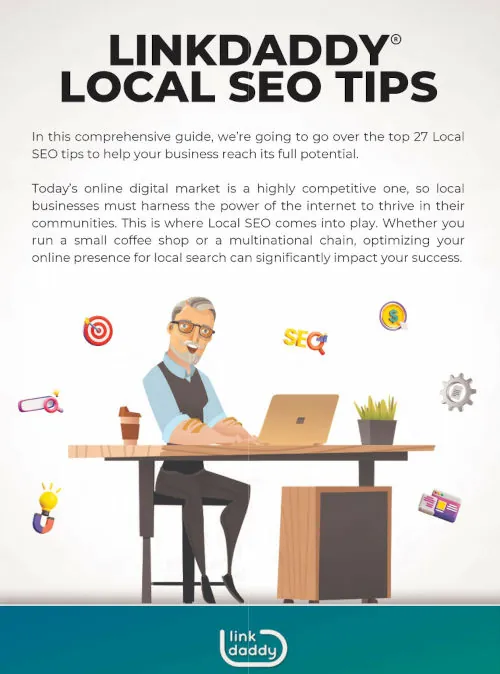
In today’s digital-first world, it’s more important than ever to make sure your website is UX optimized for both users and search engines. Unfortunately, many businesses make the mistake of thinking that these two goals are mutually exclusive.
The truth is that you can have both a beautiful, functional website and one that’s optimized for search engines, but it takes time and effort to get there.
So what does this mean for you? It means that you need to start thinking about your website as an asset that will help drive traffic to your business and increase sales. You need to consider how your site will be used by customers after it’s built—not just when it first goes live.
There are some things you can do to make sure that your website is optimized for both users and search engines. Let’s start with user experience. A good user experience means your users will be able to find what they need quickly, without having to dig through a lot of confusing information. It also means you’ll have a lower bounce rate—meaning that visitors who land on your site will stay there longer before leaving—which will improve your SEO rankings in Google.
You might be wondering: what does it matter if users engage with my site? Well, it matters because if your users aren’t engaging with your site, then they’re not going to link to it (which is one of the most important factors in SEO). If they don’t link to it, then no one else is going to link to it, either!
And when people aren’t linking to your site… well… Google won’t rank you highly for anything but search terms related directly to keywords like “website” or “websites.” Do you see where we’re going here? It’s pretty simple: if people don’t click on links that lead back to you from other sites, then Google won’t know how relevant those pages are—and they won’t rank them highly in their search results.
If you’ve ever heard someone say that UX design has no impact on SEO rankings, they’re wrong. Keep reading to learn more about how bad UX can hurt your SEO and what you can do to fix it.
What is UX and How Does it Affect SEO?

The user experience is how a user interacts with and experiences a product, system, or service. It includes a person’s perceptions of utility, ease of use, and efficiency.
A good user experience is easy to understand and use. You want your users to feel confident using your product or service, so you need to make sure that it’s intuitive to use.
A bad user experience can be frustrating for both you and your users. It might be difficult for your customers if they don’t know how to find what they need on the site or if they have trouble using certain features.
SEO or search engine optimization is all about optimizing a page and making it easier for the search engine to recognize and appropriately position the page. UX or user experience is all about providing every page visitor with good content and an excellent overall experience.
The two concepts are often confused, but they are not the same thing by any means. Both are important for your website as a whole, but they require different approaches.
Search engine optimization (SEO) is all about getting your website ranked higher in search results by focusing on specific keywords, content, and backlinks. It’s important because it maximizes visibility for your business online and helps you rank higher in search engines like Google or Bing.
User experience (UX) is more than just how well a website looks; it also includes how easy it is to use. A good UX will keep visitors engaged while they’re on your site so that they’ll stay longer and convert more often (if you’re selling something). This can be achieved through things like having clear call-to-actions that lead somewhere useful when clicked on (for example: “Shop Now” or “Sign up”).
Your Site is Violating Webmaster Guidelines
One of the quickest ways to tank your SEO is to violate Google’s Webmaster Guidelines. These guidelines are designed to help ensure that websites provide a good user experience by, among other things, avoiding deception and delivering content in a way that is easy for users to find and consume.
When you violate these guidelines, Google will penalize your website by lowering its page ranking on search engines. This means that if you have a site that’s been punished by Google, it will be harder for visitors to find your site through search engines like Google. Not only that, but if you’ve been penalized by Google, it might even be difficult for people who already know about your site to find it on their own.
The most important thing you can do when it comes to SEO is to provide an excellent user experience. That means giving people what they’re looking for—and not just what you want them to see. If your users don’t trust you, they will leave your site quickly and never come back. You also need to keep in mind that Google is always changing its algorithms and may penalize sites that violate their guidelines or don’t provide a good user experience—so stay up-to-date on all changes so that you don’t miss out on opportunities!
Google publishes the Webmaster Guidelines on its official website. The guidelines are updated regularly, so it’s important to check back often to make sure you’re staying up-to-date with any changes.
There is also an extensive section dedicated to Search Console in Google’s Webmaster Guidelines that explains how Search Console works and what data it provides when you use it.
If your website violates any of these guidelines—even if it’s just a small violation—you can be sure that Google will take notice and penalize your site accordingly. Not sure if your website is in compliance? Reach out to an experienced SEO professional for an audit.
Low Dwell Time

Dwell time is the amount of time that a user spends on your website before returning to the SERP (search engine results page). A low dwell time is often indicative of a poor user experience, as it usually means that visitors didn’t find what they were looking for on your site or that they needed help navigating your site.
If a visitor has to look for help navigating your site, it’s an indication that you don’t have a clear navigation flow. You may want to consider using breadcrumbs, which are those little icons that show you the path from one page to another. They’re great for helping people find their way around a new website.
To calculate dwell time, you first need to analyze the number of clicks it takes for users to find what they’re looking for on your site. If it takes 3 clicks, then there’s a high dwell time; if it takes 1 click, then there’s a low dwell time. The more clicks it takes to reach your goal, the longer your dwell time will be.
So what does all of this mean for you? If your site has a low dwell time, it means that users aren’t spending much time on your site before moving on. It could be because the content isn’t engaging or relevant to their query, or because it’s difficult to navigate. Either way, it’s not good news for your SEO! Search engines view a low dwell time as a sign that your site wasn’t relevant to the user’s query or that it provided a poor user experience, which can lead to lower rankings in search results.
Google Knows How Visitors Use Your Site
Have you ever had the experience of searching for something on Google, finding what you’re looking for, and then clicking on a link to get more information? Did you find yourself getting distracted by other links and tabs that were open in your browser? Did you lose track of the site where you started?
If so, then welcome to the club! We’ve all done it—and it’s called “pogo-sticking.”
As you might expect, this pogo-sticking behavior can negatively impact your SEO rankings. On the other hand, if users click on your listing and stay on your site for an extended period, this is a sign that they’re finding what they’re looking for and engaged with your content—both of which are good news for your SEO!
Google uses a variety of signals—including click-through rate (CTR), dwell time, and bounce rate—to understand how users interact with websites after clicking on a search result. If users click on your listing in the SERP but then quickly return to Google (known as “pogo-sticking”), this is a sign that they didn’t find what they were looking for on your site.
These signals are all important, but the bounce rate is particularly important because it indicates that users aren’t finding what they need on your site and/or don’t have a positive experience as a result. If you have an above-average bounce rate compared to similar sites, this means that there may be something about your site that’s causing users to leave quickly after arriving on it.
Nobody is Linking to You

Links from other websites are one of the major ranking factors used by search engines like Google when determining where to rank websites in search results. In other words, if nobody is linking to you, it’s going to be very difficult—if not impossible—to rank well in search results. This is why link building is such an important part of any good SEO strategy! If you want to see your website rise in the rankings and attract more visitors, you need to get people talking about what you’re doing.
The most common way to get links is by guest posting on other blog sites that are relevant to yours. For example, if you’re a blog about how to build a garden shed, then it makes sense for you to write a guest post on another gardening blog that’s worth reading! You can also reach out directly to bloggers who have written about similar topics and ask them if they’d be willing to post a link back on their site. There are many ways for bloggers to help each other out and grow their audiences together!
If you want to get more links, you’ll need to start by analyzing what your competitors are doing. Here are some things to look for:
– Are they targeting similar keywords? If so, this might be a good opportunity for you to check them out and see if there’s anything you can learn from them.
– Are their websites optimized for mobile? If not, maybe that’s something you should consider as well (especially if most of your traffic comes from mobile devices).
– How often do they update their content? It’s always nice when sites publish new content regularly because it makes it more likely that someone will share it on social media or link back to it from their own site—which means more traffic!
If you’re not sure how to go about building links, reach out to an experienced digital marketer or SEO expert for help.
The Bottom Line
Bad UX design can have serious consequences for your website’s SEO ranking—but thankfully, there’s a lot you can do to fix it! By ensuring that your website complies with Google’s Webmaster Guidelines, improving dwell time, reducing pogo-sticking behavior, and building links from high-quality websites, you can dramatically improve your chances of ranking well in search results.
The next time you go online, take a few minutes to do some research on your competitors. What are they doing? What keywords are they targeting? Are their websites optimized for mobile devices? How often do they update their content? You should also look at their social media presence and see if they’re active on any of the platforms you use. By analyzing what your competitors are doing, you can learn a lot about how to make your own website more effective.









